Treasure Museum
Treasure Museum En
By advance reservation only
Advance reservations are required.
This museum, which opened in April 2011, exhibits and stores 62 items designated as important cultural properties by the state, including materials related to the shogunate and imperial court, as well as tangible cultural properties of Hokkaido and Ainu folk materials.
- Important cultural properties designated by the state
- Tangible cultural property of Hokkaido
- Materials on Zenkoji
- Exhibits in the museum
- Information for visitors
Cultural properties of Zenkoji
Important cultural properties designated by the state
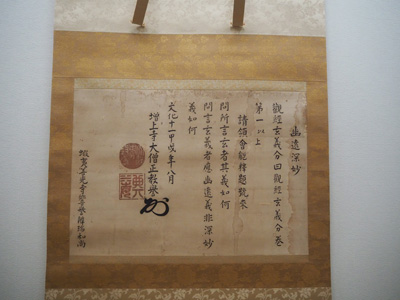
A document of instructions on missionary and other activities written by a priest of the highest order at the main temple of Zojoji for the chief priest
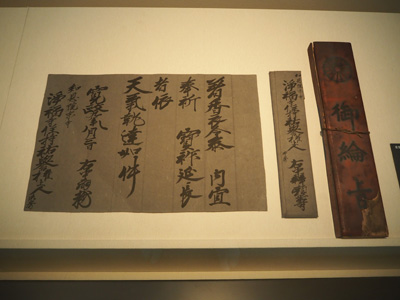
The letter of appointment issued by the Emperor to the first chief priest Shokai
August 1797
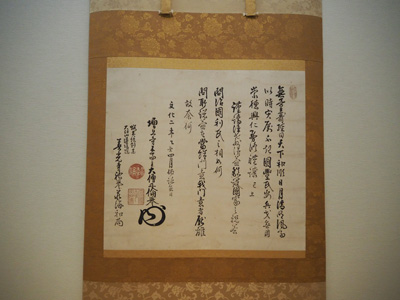
A document of instructions on missionary and other activities written by a priest of the highest order at the main temple of Zojoji for the chief priest
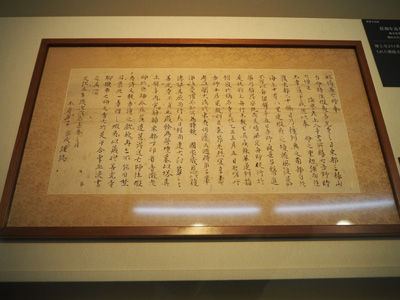
Shokai, who was appointed to be the first chief priest, died of disease on his way to Ezo. This is the eulogy tearfully written by accompanying disciple Mitsunari to his late master in 1808.
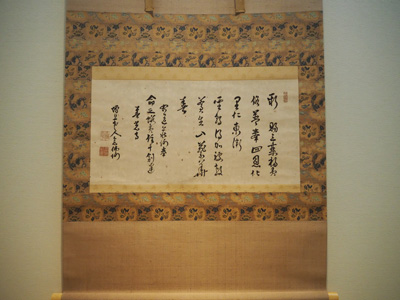
A document of encouragement sent from the main temple of Zojoji to the first chief priest Shokai in 1805
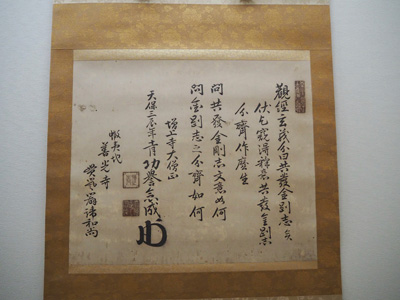
A document of instructions on missionary and other activities written by a priest of the highest order at the main temple of Zojoji for the chief priest

A Buddhist instrument used when chanting invocations, stamped with “5th month of the second year of Bunka (twenty-sixth of the sexagenary cycle)”
It is thought to have been brought by the first chief priest Shokai when he was dispatched from the main temple.
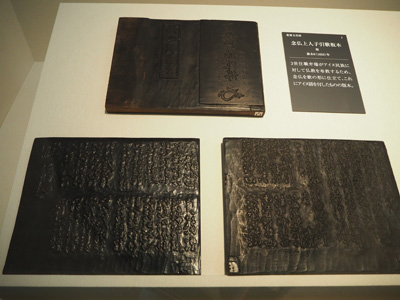
A poem written by the third-generation chief priest Benzui to preach the teachings of invocations. The Ainu writing is printed alongside to propagate Buddhism to the Ainu. It was sung with a melody while striking shoko (Buddhist instrument) and dancing. This wood block was made by the fourth-generation chief priest Bentai in 1832.
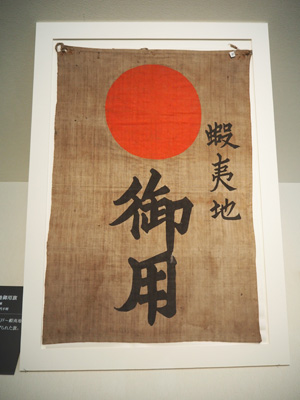
This was used by the party led by the chief priest when traveling between Edo and Ezo on official business.
Tangible cultural property of Hokkaido
The banner has been designated as a tangible cultural property by the Hokkaido government.
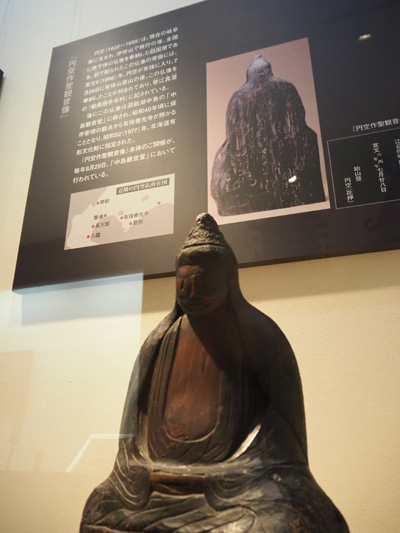
Kannon statue made by Enku
The engraving on the back of this statue states that it was dedicated to the temple after Enku climbed Mt. Usu on July 28, 1666. The fact is also written in Ezo no Teburi, a travel diary by Masumi Sugae. The statue was later relocated to the Nakajima Kannon-do on the Nakajima islands of Lake Toya by shogunate official Denjuro Matsuda. It was then entrusted to Usu Zenkoji around 1965 for the purpose of preservation and management, and was designated as a tangible cultural property of Hokkaido in 1977. This statue is shown to the public at the prayer festival held on August 28 every year at the Nakajima Kannon-do.
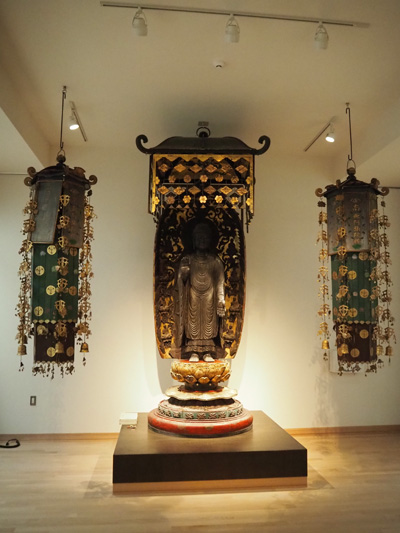
Standing statue of Shaka Nyorai
The statue is said to be a replica of the standing statue of Shaka Nyorai (national treasure) at the Seiryoji temple in Saga, Kyoto. It is known as the Seiryoji-style statue of Shaka Nyorai and was made in the early Kamakura period. The halo is thought to have been made separately in the Edo period. It is said in the temple record of Zenkoji in 1813 that it was contributed by Shukai Honjo, who was the chief priest of the Reizanji temple (Meguro, Tokyo), and is believed that it was dedicated in the days of the first- to third-generation chief priests of Zenkoji. It was designated as a tangible cultural property of Hokkaido in 1959.
Materials on Zenkoji
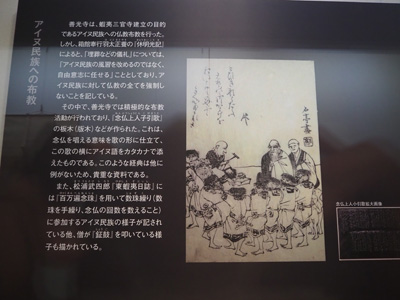
The then chief priest is singing Nenbutsu Shonin Kobikiuta written by the third-generation chief priest Benzui while striking shoko, with the Ainu dancing around him.
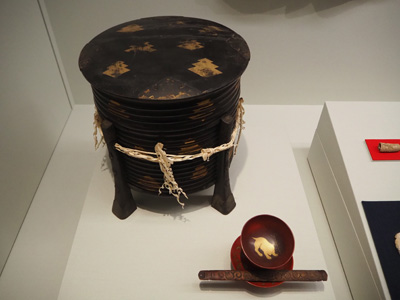
The collection of Zenkoji includes approximately 90 Ainu tools donated by residents of Usu and other people. Many of them are ritual tools, such as ikupasuy and sintoko (ceremonial lacquerware boxes). There are also clothes, swords and accessories. These include items kept in local households, as well as burial accessories unearthed when land was excavated.
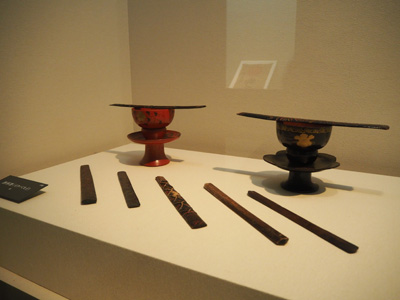
Wooden ritual tools used by the Ainu when offering sacred sake to gods and ancestors in ceremonies
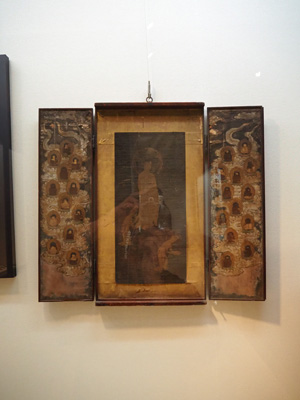
This was used by successive chief priests for missionary activities until the end of the Meiji era. The painting of the coming of Amida Buddha to welcome the spirits of the dead is said to be from the Kamakura period. Twenty-five bosatsu (Buddhist saints) are painted on the inside of the door.
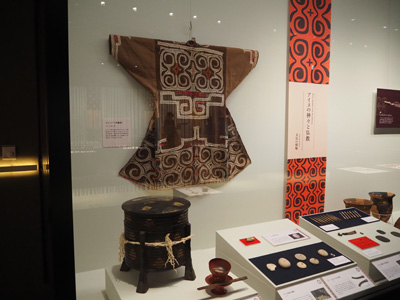
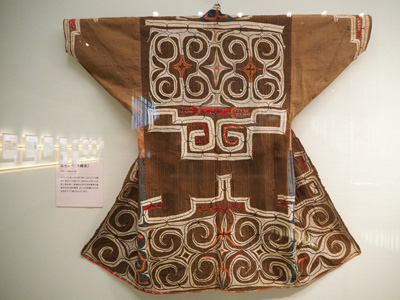
Ainu native dress with Ainu patterns used on the Funka Bay coast and in Usu. It is made with cotton and silk obtained from the mainland and uses a combination of three techniques—straight cloth applique patterns, curved cutout patterns and thread embroidery.
Exhibits in the museum
Other important cultural properties are also exhibited.
Information for visitors
Please note that advance reservations are required to enter the museum.
- [Admission fee]
- Adults: 500 yen, High school students or younger: 400 yen
Discounts for groups of 30 or more: Adults: 400 yen, High school students or younger: 300 yen
- [Opening hours]
- 9:00 a.m. – 5:00 p.m. (reservations only)
Inquiries
Please contact the temple for reservations to enter the Treasure Museum.